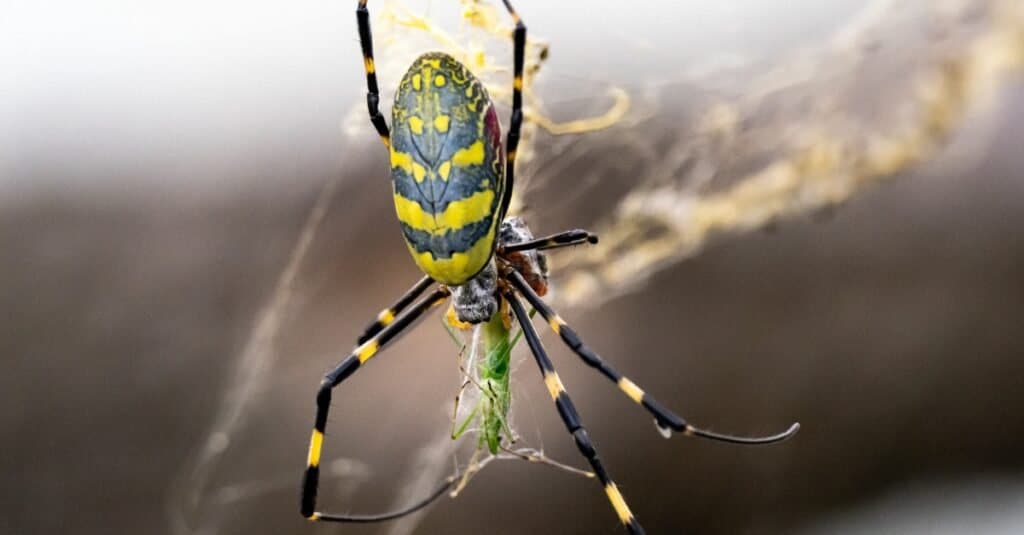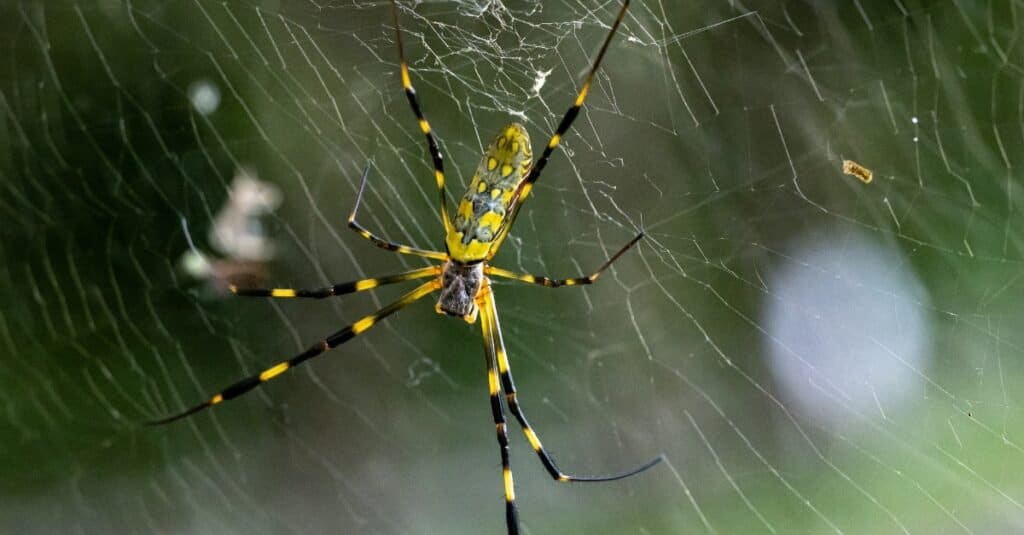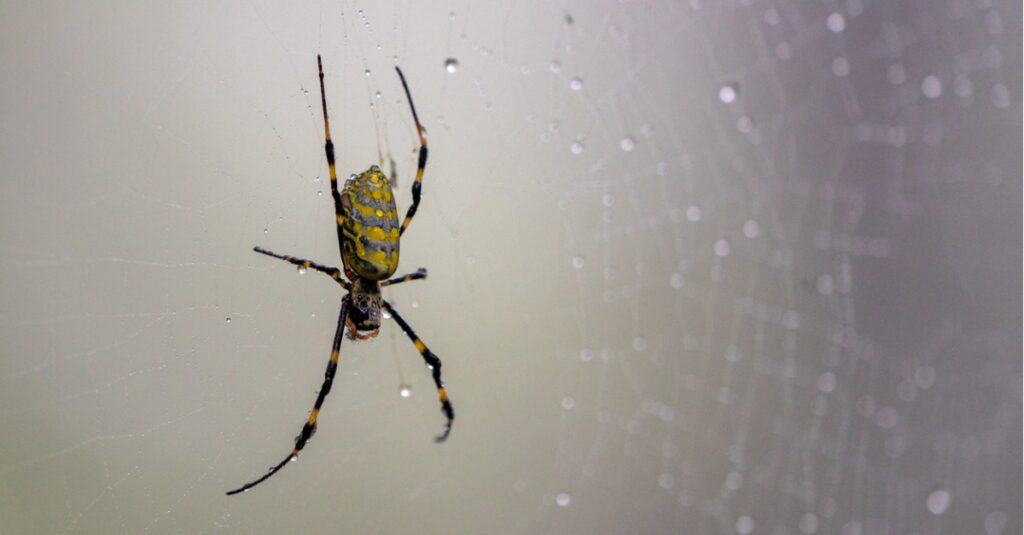Even outside of human politics, invasions happen all the time! Sometimes, it’s a local invasion of one ant colony attacking another, but other times it’s a lot larger in scale. Often, these “invasions” occur when an invasive species, insect or animal alike, are introduced into a new region. Within months, an invasive species can wipe out natural habitats and kill native species with ease. Most of the time, these invasions are caused by humans. There may not be a more prudent example of this than the Joro spider.
The Joro Spider Invasion

The Joro spider is generally well-regarded across its native habitat.
©iStock.com/David Hansche
Joro spiders, scientifically known as Trichonephila clavata, are a species of spider native to Japan, Korea, Taiwan, and China but have recently made landfall here in the United States. These spiders are easy to identify, with a large yellow body and black legs, with alternating yellow and black stripes all over. The males measure 7-10 mm across, while females are nearly double that, between 17 and 25 mm across.
The Joro spider is generally well-regarded across its native habitat, with people revering it for its colors and history. In fact, the spider gets its name from the Japanese folk story of Jorōgumo, a creature who can change her appearance into that of a beautiful woman.
Joro Spiders in North America

The Joro spider was first discovered in North America in 2014.
©iStock.com/David Hansche
Although the Joro spider isn’t necessarily a “bad” or dangerous spider, it was first discovered in North America in 2014 and is spreading. The first location it was found, Georgia, seems to be the focal point for the spread of this now-invasive species, and it seems to be speeding up. It’s not clear how the spiders got to mainland America, but most theories revolve around a spider making its nest on a shipping container sent across the world.
Since it was first discovered in 2014, the spider has increased the range in which it can be found. Now, nearly 10 years later, the Joro spider can be seen across most of northwest Georgia and into South Carolina. At current rates, the Joro spider will eventually colonize most of the eastern United States and become a naturalized species.
Are Joro Spiders a Bad Thing?
When we think of invasive species, we generally think of negative examples. The red-eared slider, feral cats, and cane toads are among the most famous and severe, but it isn’t always the case where an introduced species is bad. In fact, there is some divide as to the long-term effects of the Joro spider in North America.
As it stands, research isn’t fully clear as to the long-term effects of the spider in the region. They are extremely impervious to cold, which is the trait that will likely allow them to travel up the Eastern Seaboard with ease, but is that all? Well, the initial findings of some data show that the Joro spider could help with a different invasion problem that IS causing issues: brown marmorated stinkbugs.
Brown stinkbugs are an introduced species from the same region as the Joro spider and have been extremely detrimental to the regions they are found. Even worse, most of the wildlife in North America won’t eat them, especially the spiders. But, since the Joro spider evolved in the same area as the stinkbug, they don’t have any qualms about feeding on these stinky insects. Although it isn’t certain, Joro spiders could be the answer to the massive stinkbug invasion that North America is facing.
On the other side of the aisle are people who simply don’t like “more” spiders in North America. The webs of the Joro spiders are quite large and strong and could potentially be annoying for people across the eastern United States. Ultimately, there isn’t a “right” answer (at least not yet), and more research is likely to give us guidance.
Are Joro Spiders Dangerous?

Joro spiders are venomous. However, they are not lethal to humans.
©iStock.com/SmevansEvans
Joro spiders are quite large spiders, but they aren’t especially venomous or aggressive. Bites are mild, with a bit of localized pain and swelling being the worst of it. Although not dangerous, Joro spider webs are quite strong and could be annoying for those who happen to walk through them. Even still, the webs of these spiders are notoriously pretty and are known to glow golden in the sun.
At their worst, Joro spiders are a nuisance, although they aren’t dangerous to humans in any real way. Even more, scientists hope that the overall impact of these spiders will be net-positive as they eat stink bugs, mosquitoes, and flies. We don’t know what will happen long term, but it looks like Joro spiders are here to stay!
Up Next:
- Joro Spiders in Georgia: How Bad is This Invasive Species?
- Joro Spider Webs: How Big Are They?
- Are Joro Spiders Bad? Are they an Invasive Species?
The photo featured at the top of this post is © iStock.com/LizMinkertJohnson
Thank you for reading! Have some feedback for us? Contact the AZ Animals editorial team.






